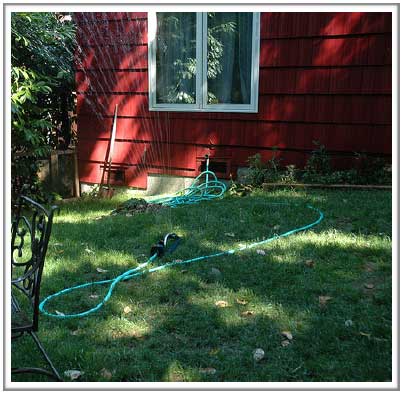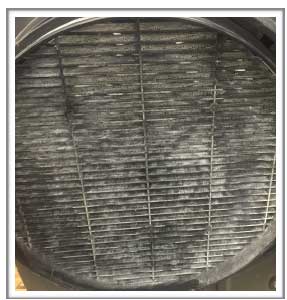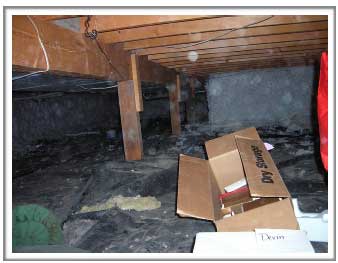News and Updates
Are You Guilty of These 4 Common Crawl Space Mistakes
Are You Guilty of These 4 Common Crawl Space Mistakes
Many people think of the crawl space as a dirty, scary space and like to pretend that it doesn’t exist. Unfortunately, your crawl space needs some attention if you want to live in a well maintained home. If not taken care of, crawl spaces often become damp and full of moisture which can lead to the growth of mold, fungi, and wood decay. This in turn makes the crawl space more inviting to pests, in addition to compromising the structure of your home. So, how do you end up with all of these issues? Here are 4 common mistakes, people make when dealing with their crawl space:
1. Do Nothing
The easiest way to end up with problems in your crawl space is to ignore it. Many homes have an open crawl space with a dirt floor and air vents letting in outside air. Unfortunately, this is not a great option long term.
Foundation vents were intended to be a quick and easy option for crawl spaces that simply allow air to flow through the space, with the average humidity of the area never being too varied. Problems start to occur in more extreme climates. For instance, in the Northeast, frigid temperatures could cause freezing pipes in the crawl space. In the humid areas, such as the Southeast, it’s the summer months that are problematic. The vents let in hot and humid air that creates a moisture build up in the crawl space.
In addition to the wall vents, the typical, ignored crawl space has uncovered dirt floors, which are also problematic. When left uncovered, your crawl space can be exposed to moisture from the ground through the transfer of water vapor.
2. Fill It Up
Another common way people end up with issues is by filling their crawl space with items that don’t belong such as trash or yard waste. While it may seem like an easy way to dispose of the waste, it will only attract pests, and encourage mold growth. Similarly, it’s not recommended to use your crawl space for Christmas decorations, out of season clothing or whatever else you may have lying around. Again, this just provides more organic material for pests and mold to thrive on.
3. Forget About the Surrounding Area

Besides the crawl space itself, you also need to pay attention to the area around the foundation of the home since this can directly impact the crawl space. For instance, your yard should be graded so that water flows away from the home, not directly into the foundation. That’s just asking for moisture problems. In addition, make sure the gutters and downspouts are working properly and not clogged. If a gutter is broken, leaving water to flood directly down the side of your home, you may have some issues. Irrigation can be another cause of moisture problems, especially if you are irrigating within 5 feet of the home.
The surrounding area could contribute to pest problems in your home and crawl space, as well. For example, many bugs make their homes in stumps or wood piles so if you have those beside your home, you’re more likely to have pests. This is also true if you have overgrown bushes or plants beside your home.
4. Ignore Your Dehumidifier
If you do take the time to seal your crawl space, put down a vapor barrier, and install a dehumidifier, then you are on the right track. After that, the key is to maintain the dehumidifier on a regular basis. WatchDog dehumidifiers have a built in humidistat to monitor the humidity level, however, they do still require annual maintenance to continue working properly. If a drain line is clogged on the unit, then it’s not going to help your crawl space very much.

How to Have a Healthy Crawl Space
Now that we’ve covered what not to do, what should you do for a well maintained crawl space? First of all, fix any problems that you currently have. That means cleaning out any junk that might be stored there, removing mold, treating pests, repairing foundation walls, and anything else necessary to restore your crawl space. This is also a good time to take a look at the surrounding area. Make sure the gutters are working, irrigation doesn’t come within 5 feet of the foundation, and drainage is directed in the proper direction.
After all of the issues have been taken care of, it’s time to cover up the wall vents and seal the crawl space. Next, take care of the dirt floor by adding a polyethylene vapor barrier (check local regulations for exact thickness required in your area). Finally, it’s time to add in a crawl space dehumidifier. The dehumidifier will ensure that your crawl space stays at a consistent humidity level and help prevent issues like mold from returning. Once your dehumidifier is installed, make sure you keep up with regular maintenance. Typically, annual maintenance is sufficient, however, this depends on the environment and more frequntly. While WatchDogs can basically maintain the crawl space on their own, you will need to perform maintenance, such as cleaning the filters, coils, gravity drain. At this point, you have a sealed space with a well maintained dehumidifier so you’re in good shape for a healthy crawl space. Just be sure not to revert back to the common mistakes!
Dehumidifier – Seaira Global Watchdog NXT85C – FREE SHIPPING


